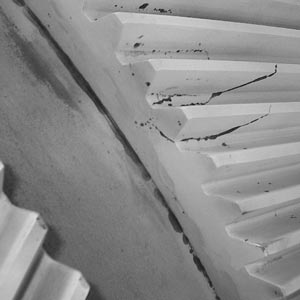The liquid penetrant testing method (PT) is used to detect surface defects for all non-porous materials. This technique can reveal defects through the capillary action of a liquid penetrant; its joint action with a developer expose the defects, which are then easily visible with the naked eye.
Two main operating methods are used: colour contrast and fluorescent. The fluorescent method is the most sensitive.
This inspection method applies to all non-porous materials, primarily non-ferromagnetic materials:
• austenitic stainless steels (304, 308, 309, 316, 321, 347, etc.)
• non-ferrous alloys (aluminium, titanium, magnesium, copper, bronze, brass, etc.)
• ceramics and plastics
Magnetic particle testing (MT) and liquid penetrant testing (PT) are quick, reliable, safe and portable. Their use is not limited in any case by the shapes, dimensions or mass of the part to be inspected.
Typical applications subject to MT and/or PT testing:
• moulded and forged parts (crack, fissure, lapping, porosity, etc.)
• laminated, drawn and extruded products (lamination, lapping, crack, etc.)
• heat treated parts (crack)
• welded parts (fissure, lack of fusion, lack of penetration, porosity, etc.)
• parts in service (fatigue crack)
• inspection of machined or grinded parts (crack)

